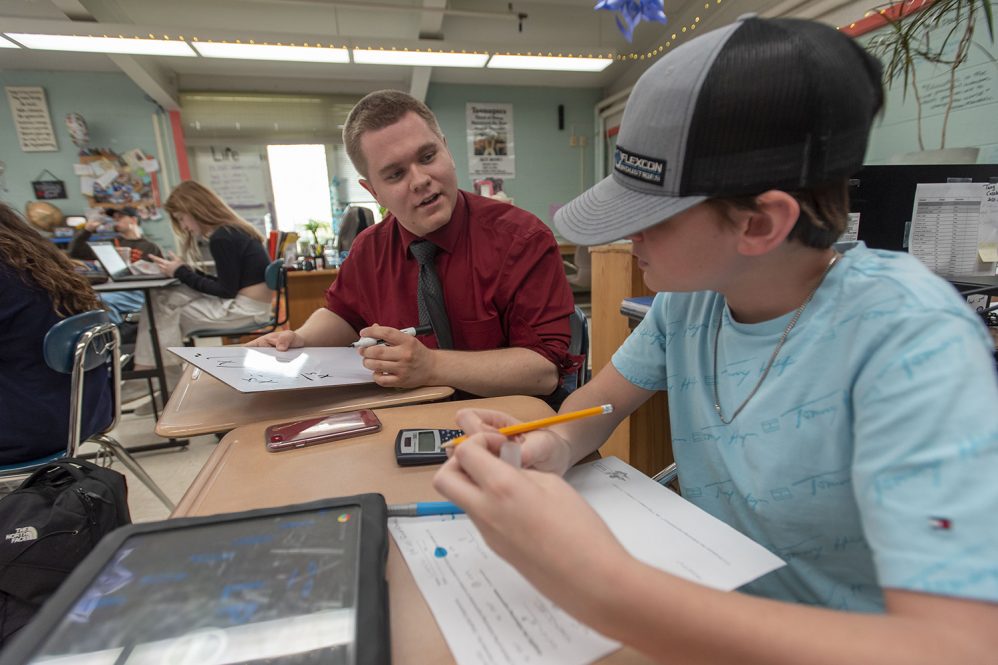Editor’s Note: Sarah Gilmore, a Neag School doctoral candidate in the Department of Educational Psychology, prepared the following rapid research brief (unabridged version) with the Center for Education Policy Analysis, Research, and Evaluation (CEPARE). Below is an executive summary.
Since the beginning of the COVID-19 pandemic in 2019, and the school closures that swept the United States from early 2020 through 2021, grave concerns have been raised about the effects on K-12 education. Now that the dust has begun to settle, recent analyses by policy research centers and organizations like the National Bureau of Economic Research (NBER) have begun to quantify the effects on student achievement, and to consider the future implications of widespread learning loss. Data from the National Assessment of Educational Progress (NAEP) has shown that from 2019-2022, the average public school student in grades 3-8 lost around half a year of progress in math, and a quarter of a year’s progress in reading (Harvard University Center for Education Policy Research, 2023), and a recent report states that from 2019 to 2022, public schools in the United States lost 40% of the past 20 years’ progress in increasing math and reading achievement (Kane et al., 2022). If not recovered, this decline is estimated to result in a loss of almost $20,000 in lifetime earnings per student, or $900 billion dollars for all K-12 public school students enrolled in during the 2019-2022 academic year (Kane et al., 2022).
While it is clear that these economic losses will most negatively impact students already disadvantaged by income and racial disparities (Office for Civil Rights, n.d.), recent analyses are beginning to reveal a landscape in which the impact of COVID-19 on student outcomes does not appear to be the product of individual or household factors like race or income. Instead, it appears that levels of learning loss are most variable between districts as opposed to within them, suggesting that, in addition to community-level factors like local COVID-19 death rates and poverty status, “the cause of achievement loss was likely due to district level differences (such as school resources, the quality of remote instruction, or the level of disruption in district classrooms),” (Fahle et al., 2023).
In light of evidence that COVID-19 impacts are likely to be more localized than previously understood, we can look to the experiences and outcomes of individual school districts to explore how district-level factors have influenced student achievement. One small, largely blue-collar, urban public school district in southern New England – District A – may provide an example of what Shulman (Shulman, 1999) would call “the possible”: a district that, despite these community factors, has shown significant resilience in the face of COVID.
The findings from this case study not only suggest answers to these questions, but have implications beyond District A: If sustained student achievement growth during COVID-19 is possible, what can we learn from this case that might go beyond supporting recovery from the next event of great social adversity, but resilience in the face of it?
Purpose
This research aims to understand the factors that contributed to unexpected student achievement growth in District A – a small blue-collar urban public school district in Connecticut – despite prevailing community challenges and the broader negative impact of the COVID-19 pandemic on K-12 education. By studying District A’s reforms and practices prior to and during COVID-19, this study seeks to understand the factors that enabled this growth and its resilience through COVID-19, and identify the implications of this case for broader educational policy and practice.
If sustained student achievement growth during COVID-19 is possible, what can we learn from this case that might go beyond supporting recovery from the next event of great social adversity, but resilience in the face of it? — Sarah Gilmore
Research Methods
This report uses explanatory case study methodology and inductive analysis to identify key points and recurring themes in district-level documentation and semi-structured interviews with key stakeholders.
Findings
From 2016 – 2020, a newly-established leadership team led District A through an era of comprehensive reform to address declining student achievement, resulting in several district-wide initiatives to increase equity and instructional rigor. These initiatives were successful in increasing student achievement results, a positive trend that continued despite the challenges of COVID-19. Analysis of district data, documentation, and interviews suggests that four factors enabled District A to achieve these outcomes, and demonstrate resilience to, rather than recovery from, the pandemic:
- A coherent, comprehensive, and rigorous vision and framework
- Trust and buy-in through human and social capital
- Effective and strategic leadership and implementation
- Consistency and adaptability in the face of crisis
Implications for Research and Practice
The findings of this case study suggest that policy makers and district leaders who aim to develop effective, sustainable, and resilient reforms for student achievement growth and educational recovery may not achieve these goals through specific initiatives alone. Instead, these findings suggest that successful reform may be achieved by establishing a context-driven vision and framework for continuous improvement, in which initiatives and the ways in which they are implemented act as expressions of clearly articulated and internally consistent principles.
CEPARE produces high-quality research, evaluation, and policy analysis that informs leaders and policymakers on a range of pressing issues, with a particular focus on enhancing social justice and equity across p-20 educational settings in Connecticut and beyond. CEPARE produced this Rapid Research Brief as part of the SETER Alliance, which aims to strengthen and support learning opportunities in Connecticut’s Alliance districts. Learn more about CEPARE cepare.uconn.edu. Access the PDF VERSION (including all references and appendices).
 Sarah Gilmore is a doctoral student in Educational Psychology in the Learning Sciences program at the University of Connecticut, and an awardee of the NSF-funded TRANScend fellowship in Educational Neuroscience. She is also pursuing a Graduate Certificate in Cognitive Science and holds an MA Ed in Leadership and Management.
Sarah Gilmore is a doctoral student in Educational Psychology in the Learning Sciences program at the University of Connecticut, and an awardee of the NSF-funded TRANScend fellowship in Educational Neuroscience. She is also pursuing a Graduate Certificate in Cognitive Science and holds an MA Ed in Leadership and Management.
Prior to beginning her doctorate, Gilmore was a primary teacher for 15 years in international schools, going on to specialize in transdisciplinary technology integration and teacher coaching. She is a passionate supporter of classroom teachers and teaching, and holds feminist, humanist, and democratic perspectives. She has a broad base of research experience that has included qualitative, quantitative, and mixed methods, as well as lab-based research on science learning, including EEG, eye- tracking, and behavioral measures. Her research interests are in using technology to develop scalable, equitable, and evidence-informed pathways for teacher learning, and understanding how teachers’ identities, beliefs, and lived experiences inform theways in which they learn and teach. She is currently developing a statewide mixed methods study to describe current literacy teaching practices and identify connections between teaching practices and individual and contextual factors.



